On discovering your process
Prelude
The artist Alexandra Climent, a master woodworker, was first exposed to certain species of exotic wood while in the jungles of Central and South America. Since then, she’s frequently visited these jungles to sustainably gather naturally felled lumber and to dig up stumps from the jungle floor to create furniture, sculptures, and other objects. Each piece is selected, designed, created, and finished by Climent at her wood shop in Brooklyn, NY. As she puts it, “I am the creator of strange objects made from rare wood I find in the jungle.”
Conversation
On discovering your process
Artist and woodworker Alexandra Climent on going to the jungles of South America to seek out rare woods, developing her own way of working with unusual materials, and figuring out sustainable practices.
As told to Brandon Stosuy, 4185 words.
Tags: Art, Woodworking, Process, Production, Business, Creative anxiety.
How did you first get into woodworking, and then making objects from rare wood?
I was in college and working two jobs to pay for it. One of the jobs was at a construction company. They used a lot of wood in their contracts to build bridges and docks and piers. A lot of it was really heavy wood, and they were struggling finding people who were selling the wood they needed. That’s how it came on my radar. Like, “Oh, what is this heavy-ass wood these guys need?” I started looking it up and being like, “Oh, this shit’s awesome. You can put it in water; it doesn’t rot. Termites can’t penetrate it. It’s like metal.” I saw an opportunity there. I thought, “Maybe I can sell it to them… I can find it.”
I was 19 at that point. I didn’t know what the hell I was thinking, but it led me on this journey. I started, in the office, trying to call up places in South America and nobody was answering. If they did, it was a fake number. Finally, I made some appointments with people down there and set up a trip to Guyana, which is the poorest country in South America.
It was not too safe for a 19-year-old to be going down there, but I went down there with the intention of buying wood for this construction company and I just kind of fell in love once I saw the wood itself. I realized I needed to show people the wood without harming the rainforest. My thought was, “You can have this beautiful wood, but it’s not truly beautiful if it has this ugly side of being cut down and the rain forest being destroyed.”
So, it was really random how I got started. I never knew that I was going to fall in love with wood. I never knew that that was going to be artistically what I would work with. It really started with the material, being in love with the material, and it went from there.
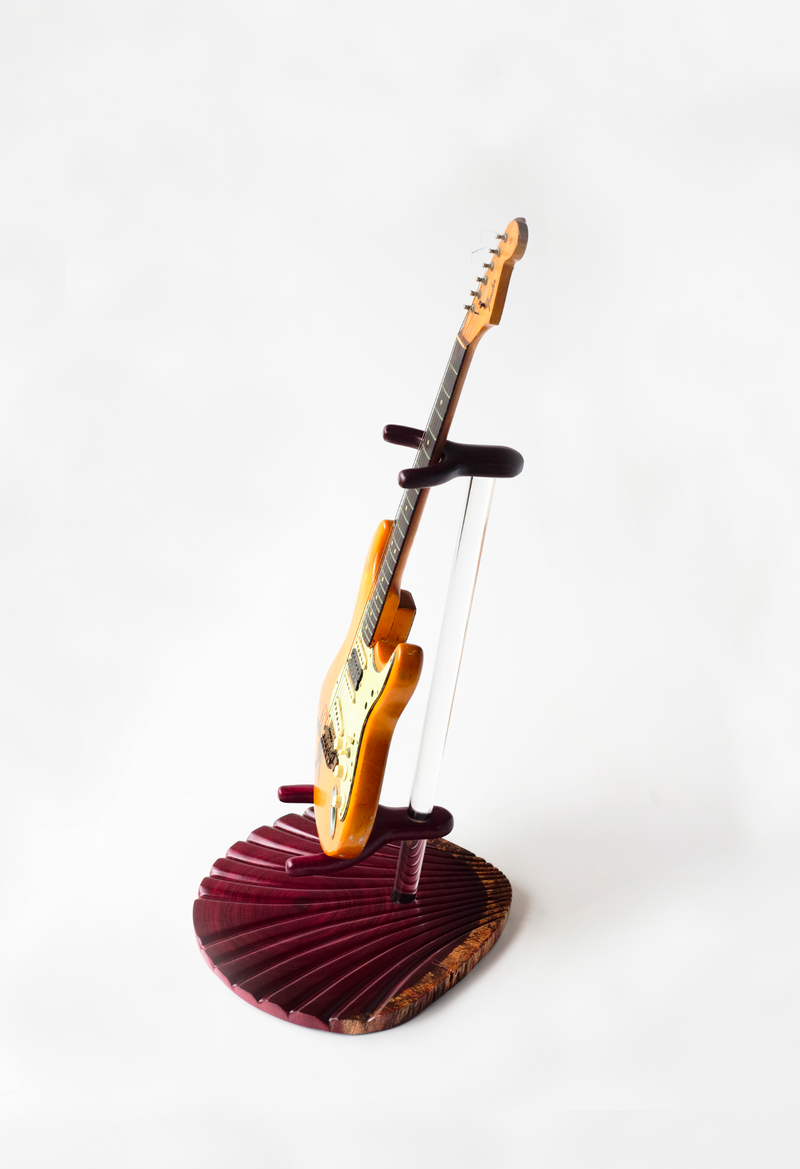
I read your descriptions of working with the wood, and it seems extremely difficult—it’s similar to chiseling concrete. How did you figure out how to work with it?
That was hard. Even getting the wood back here was a whole year’s work in itself. My mom used to drive me around. We would put one piece in the back—it was so heavy, you’d need two people to lift it. We’d take this one round stump I had dug out, put it in the back of her car, and drive around the tri-state area and ask these wood shops, “Hey, I have this really weird wood from South America. I want to cut it.” Everybody told me, “No, this wood can’t be cut. It’s too heavy.” I just kept going around, hearing everybody tell me that I wasn’t going to be able to do anything with it. But I had to keep positive. I spent years, and now I had all this wood and I had to pay to store it, and it wasn’t something you could easily move from one place to the other.
It became this thing where I was like, “Okay, nobody wants to cut this stuff for me,” so I went to my one guy and he was like, “I’ll try it out for you. Find me a blade and we’ll do it.” He cut some of it, and got through two pieces. I don’t think he had very much interest in ever doing that again. I’m sure it broke his blade. He charged me a lot of money just to have one cut.
But I took that piece that was cut and I just started working on it in my grandma’s backyard ‘cause I had no shop. And I just started sanding it and realizing that sanding wasn’t really working too well. To sand out a mark, if it had one, would take hours just to get it down.
It started out with sanding, and then I was walking around Brooklyn and Crown Heights, and I heard some saws and went inside, and I ended up talking to a guy who was like, “We have some space, you can come in and work a couple times a week.” I just started doing that, and gathering tools, and getting more and more brave.
It burned out every single blade, but I just bought new ones. I just slowly taught myself new techniques. I got comfortable using the table saw, but even that is still a problem. Making stuff is still really difficult, but I just had to work up that bravery and try things. A lot of people didn’t know how to handle the material even though they had years of experience, so I just had to treat it like it was something new, and do it myself.
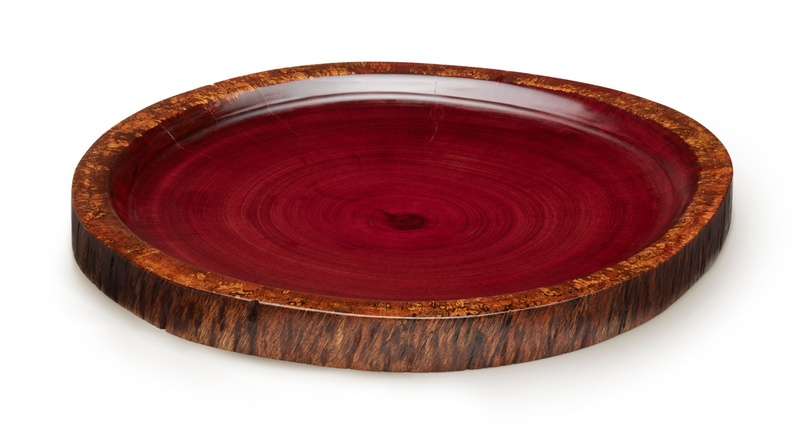
How’d you get the wood back from South America?
It was a lot of going back and forth and figuring out different ways. The first idea came from this guy who had all this land, and the forestry commission was going to come in and burn the stumps in order to clear land. They come in and counted all the trees, or whatever. Instead of having them burned, I was like, “Let me dig them out and I’ll give you some money,” and he was so excited. He was like, “You want this? This is garbage.”
Besides that, just gathering the wood and getting it here was all on a container ship. I had to wait until I had enough of it to send in a container, because sending it any other way would have been way too expensive. It took years of figuring out customs, while the wood was being gathered. When I came back to the States, I would be like, “Okay, I need to get all the paperwork in order, get a customs broker, and have all the paperwork filled out.” It was stressful. Anytime a ship would come in with the wood, I almost jumped in the water.
Did you know you’d be able to work with the wood eventually, or was it a hunch?
I just figured I would figure it out when it got here. Looking back, the fact that my mom didn’t discourage me or ask me, “What are you doing? Where are you even going to put this? You’re putting all your savings into it…” For her not to say, “You need to get a normal job,” was really great because it was a lot of work.
How much does each piece weigh?
The small ones are maybe 50 pounds, the larger ones maybe 100-120 pounds. The slabs are about 200 or maybe 150. There are some larger ones that are 500 pounds each.
You have a large following on Instagram. How did that start?
I think it was just a natural progression of my life. Early on, I would just be posting my life, normal weird stuff. I honestly kind of miss the old Instagram because I posted more weird stuff that was more me. But now I have to focus more on work things. People got to see my personality, though, and this woodworking thing would be thrown into it. It was like, “I’m working a boring job down in a basement, but then I’m going down to Guyana to get weird wood. And it’s finally coming.” It was this build-up over time. The followers just came naturally, and then as people were like, “Oh my God, now she quit her other job, now she’s a full-blown woodworker,” or “Oh my god, the color of this wood”… It just kind of kept building from that.
I think between the wood, and just being a not-so-normal girl living in New York, doing a different thing, and then traveling down to the jungle, and then the sustainability aspect. There are a couple of different things going on there, and it attracted a lot of different people.
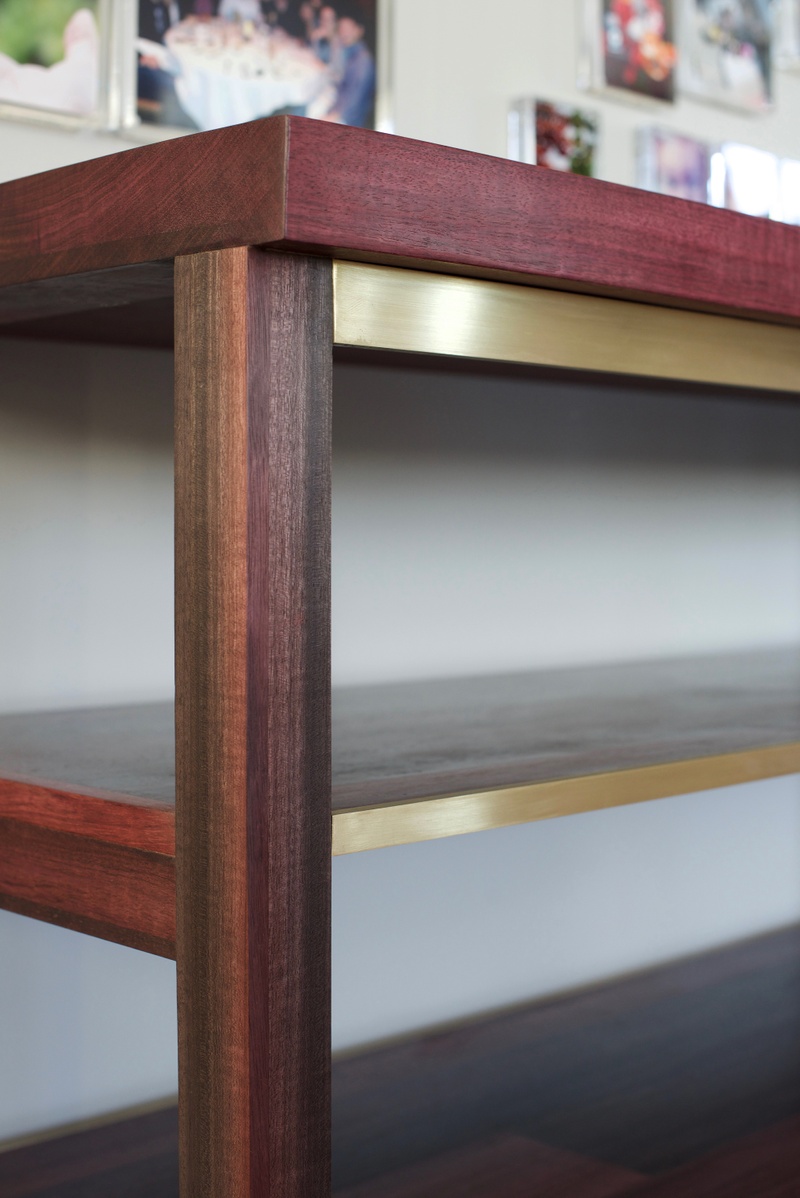
You’re making objects for sale. Do you want to show in a gallery?
That’s been frustrating. I have all these projects that come in, and when they come you have to take them because you never know when the next project is going to come. So you have less time to make works for a show.
It’s hard to keep pieces, and put them aside for a show. There’s no space for me to store things. I started doing that in the beginning when I didn’t have any clients—I was just building up stuff to hopefully show. But in the shop, it’s a real hard-ass wood shop. Everyone is drinking 40 beers a day. Not me, but… I just can’t work like that. You know, you try to be one of the guys but you just realize you can’t drink 40 beers a day, especially when you’re operating a table saw. But yeah, I don’t have space to keep everything pristine like it needs to be. The detail that goes into finishing something is so hard.
I just bought a new planner, and the first thing I wrote down was, “Get all pieces ready for art show next year.”
Do you do everything yourself?
Everything is me. It used to be that I couldn’t imagine making a piece and it not being made by me, because that feels like cheating. Other artists obviously have teams of people making their stuff, and I guess I’m getting more comfortable with the idea as I solidify myself. It’s okay to have people help you. But I’m still at this point making everything myself, besides asking for some help if the guys in the shop are around to help lift things into place. Like even lifting a huge piece onto the table saw. I need someone to help guide me. But besides that, it’s all me. That’s going to need to change soon, for sure.
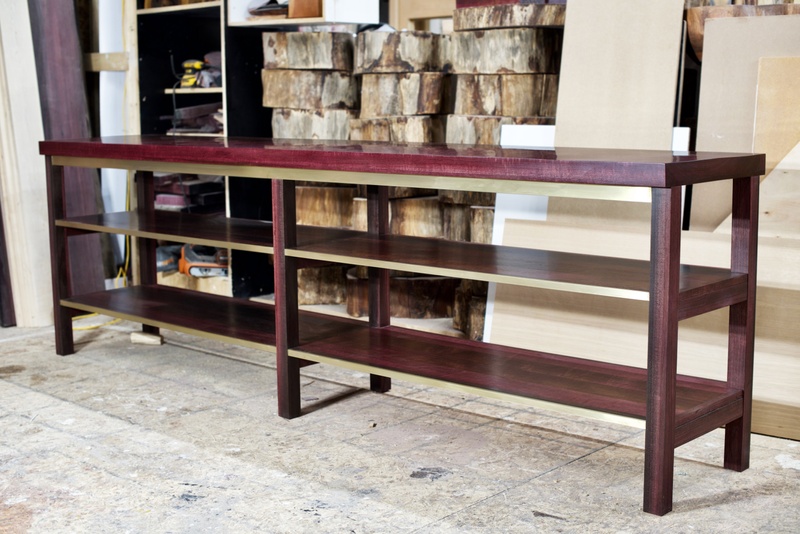
How do you avoid burning out?
I don’t know. It’s hard, even just planning these trips down to the jungle… I didn’t have so many clients when I started. I would just be able to go for a month and come back. I didn’t really have to manage it.
What’s cool about people knowing about what I do is that I can be like, “Well, I’ll make you this table, but I’m going to the jungle for a month.” Since this is part of the real process, the people who know me understand. It’s a part of it. This table you get, that comes from me going down there to do that. Sometimes people are willing to wait, which is really cool.
One of the things I struggle with is being pulled in all these different directions. Going from, “Okay, I can go down to Santa Fe and visit my friend for the weekend,” and then all of a sudden getting an order for a huge headboard that has to be out in LA. And then I have to change all my plans or just cancel it. So it goes from having this feeling of being really free and being a business owner, but then also being really tied down. And I’m still trying to figure out how to do that.
I think it really helps to have a routine. I need to work on that. I box, so going to boxing and exercising and just letting my head go away from all that really helps. Just having something else that is outside of what you are doing, something that’s consistent, I think is really important.
For a lot of people there is a point where you start having success, and then you almost become a victim of the success, where it’s hard figuring out how to function. When you go to the next level of that success, then you are able to hire someone to help do all this stuff, but until you get to that point it’s just a struggle to keep going.
I feel like that is the point I’m at now. Right before that. I’m also managing the creativity aspect of it. When you’re stressed out all the time, it’s definitely harder to be creative. I wish this was the kind of stress where I could put it into the work, but it’s just not. It’s like the kind of stress that makes me want to turn off and hide.
You have to constantly find inspiration. That’s really hard. Also, you have a lot of people giving you outside opinions who don’t understand the material. I have a lot of woodworkers asking, “Why don’t you make this?” “Why don’t you do that?” There are limits to what you can do with the material, and with just one person. And money. A lot of machines cost tons of money. I’m in a shared shop now, so I share my machines with one other guy. I’m lucky that I have that, because a lot of the machines I wouldn’t be able to afford on my own. That would wipe out everything I have. There are a lot of limits. It’s frustrating.
Do you find that clients might not know what the wood can or cannot do? And they keep having input, and you have to fight that?
Definitely, it’s a constant battle. Making them feel the wood, or trying to do things themselves, helps them understand. I had that a couple of years ago. I had someone who wanted me to carve something. I was like, “Okay, why don’t you come by and see if you can find a tool to do that.” Sometime you have to really talk that into them. But also sometimes they are just not going to listen. Even with something like how they are going to care for the piece or handle it. Once you deliver something, it’s out of your hands.
Is it physically taxing making the pieces?
Yes. When I’m making a big piece, and I’m in the shop every day, my hands are cut up and my face is red from the dust. It’s definitely not cute. It’s just rough on your body. I worry about that. The first year, I didn’t have all this other stuff to do yet, so I was just in the shop working, working, working. The next year, I was hurting. It’s a lot of physical work. It’s hard. You get that adrenaline when you are working, but then you come home and you’re like, “Uh-oh, shit… my back.”
Also, my studio is kind of messy. The wood’s hard to cut. It’s not clean. I see all these accounts on Instagram, and good for them, that they have all their stuff very clean and in order. But that’s just not me. I try my best. But you know what, you are absorbing all this stuff into your skin, which is your largest organ, so it’s like, if you don’t wear a mask for half a second—sometimes I forget. Or I need to have my glasses, but I don’t want them to fog up, because if they do, I’m going to cut my hand off. You have to prioritize and be real. Some of these shops are too perfect nowadays. When a shop is too clean, I’m like, something’s weird.
Have you tried working with other kinds of less intense wood?
Not on my own volition. I found some walnut. Somebody threw it out, so I was like, “Oh, everybody loves walnut, so let me try to make a spoon out of this just to see what happens.” There were two different things that happened. The first was that I got the walnut and I cut it, and I almost cut my hand off because it was so soft. Everyone thinks it’s a hardwood; it might be considered a hardwood here, but compared to the stuff I had, it’s soft. I’m making a spoon and I went to sand it on the spinning sander, and I literally… my thumbs almost got sanded off.
Also, after I made those spoons, I gave one to my mom. I felt like I was cheating. It didn’t feel right. I think my thing, really, is the hard wood that I’ve found. I’m just stuck with that. I have something that’s different and cool, so I’m going to go for it. I don’t want to change it up.
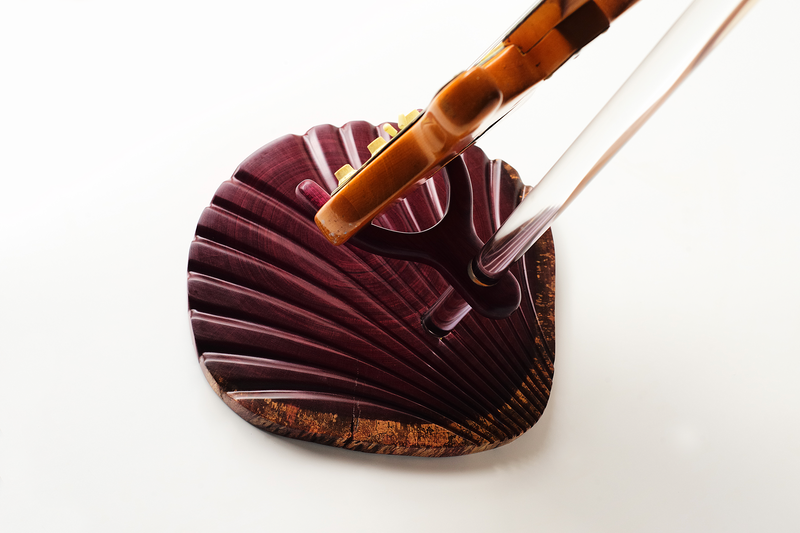
Both gathering the wood itself and working with it sounds very hard. How will you keep it going?
As long as I keep finding clients and people who really love my work, then I can have a little bit of a break in between projects. Usually people who understand it are willing to pay the money for the work, so if I keep having that, I’ll be able to take breaks and let my body rest. Eventually I’ll hire somebody who I trust to help me out with that process. That’s the future.
As you run out of one kind of wood, do you start planning another trip to find more wood, and have that process built into it?
I’m definitely not running out of wood. Even though I’m crazy and I feel that way. The aspect of going down and getting it is something that I never let go of. So that is still something that I’m doing, even though my mom is looking at me like, “You better not be bringing any new stuff home for a while, because my storage is full right now.”
In the beginning it was kind of this rush. “I wanna get it, I’ve got to get it here.” But I have enough for a while. I work specifically in Panama now, that’s where I’ve formed my community of people, and I can go down at leisure and find wood. My friend has an organic farm down there, maybe about an hour and half from the city, and they have a bunch of land. I can put all the wood that I found on his farm. So it’s basically like, I go down and collect wood and put it there. When I have enough to fill a container, I’ll bring it back to New York. That is the process now.
Also, finding seeds of the indigenous trees in Panama has been a major focus of mine. I’m planting them on the farm down there. Of all the trees in Panama, there are barely any indigenous trees left. Years ago they came in and they actually cut down a bunch of trees and planted teak and walnut—woods that aren’t native to Panama—because they sell. They were planting trees that were really popular to just cut down.
Getting those indigenous trees back into the ground there is my number one goal. I’m probably not making a big dent, but at least it’s something. I’m going in and learning about these trees and where they are, which is usually very deep in the jungle. Figuring out how to actually get the seeds, all that stuff, that’s a big part of what I’m doing. It’s not just about finding the wood anymore, it’s about finding the seeds and planting them.
Alexandra Climent recommends:
-
Shire: We adopted my dog Shire when I was in Santa Fe, NM while contemplating a move from NYC (where I was born). It turned out that I never made the move, but I came home with a very special dog. We always had dogs growing up and I loved them all, but watching Shire go from a terrified abused puppy, to the happiest dog on earth (with some special love and attention) made me feel closest to him. Having him around, both in my home and in my woodshop, provides me with a constant reason for a smile. Since I often work in the jungle planting trees and finding fallen wood, I see so many stray dogs. It has always been a dream of mine to eventually buy land in Central or South America large enough to plant trees and have an animal rescue. I would likely never leave. Shire is also named after “The Shire” in Lord of the Rings/The Hobbit. He was super shy when I got him. I’m also planning to clone him when I’ve got an extra $30,000.
-
Punk Rock: Music has always been a major part of my life. My father was a musician and played the guitar. He also wrote a crazy rock opera about outer space. He worked late and I would often stay awake waiting for him to come home. He picked up his guitar every night when he would get in and it was only then when I could finally fall asleep. I grew up listening to the Dire Straits and Steely Dan, but as I got a little older I gravitated towards punk music. I was always a bit ”different” in school and was definitely not a popular kid. I grew up in an area where people had a lot of money, but we didn’t. My mom worked three jobs while my dad struggled running his own business, and sometimes it was hard to put food on the table. Punk really spoke to me during this time because it felt like something I could get behind. The music wasn’t about loving some guy or girl, but it was about making change and rising up. It also felt like it served as a warning to people like, “Hey, I’m not like you and that’s okay.”
-
The Jungle/Rainforest: The jungles in Central and South America are some of the most beautiful places in the world to me. The whole reason I became a woodworker is because of my love for the jungle. What I love the most is how literally “alive” everything is, and how each component of the jungle works to live together. There are more living organisms in the world’s rainforests than anywhere else in the world. The trees provide so much from the air in the sky to the nutrients in the soil. The wood that I use from these places represents all the life and beauty there. Since much of the wood is dug up from the ground, many years of life can be seen along with what the tree encountered over all the years it was growing. The colors of the wood that comes from these magical lands are almost psychedelic—ranging from pink and purple to orange and green. I feel like if you look deep enough into nature, you can understand everything.
-
Lord of the Rings: I really do not even know how to put into words the range of emotion, admiration, and inspiration that comes from the love I have for these books. My dad was a huge reader of fantasy and Lord of the Rings was his favorite. The first book I can remember him reading to me was The Hobbit. I think to me it was being able to be brought into another world and Middle-Earth being my home away from home. Tolkien fills LOTR with so many moments of goodness and hope and he created a world you’d love so much that you actually care if it were to be harmed or threatened. Each time I pick up these books and return to Middle-Earth, it’s a new story and a new lesson being learned. Reading in general, especially fantasy, very much makes me feel magical and sparks all kinds of creativity.
-
My Mom and Dad: I’m an only child and was always incredibly close to both my parents. My dad was my best friend growing up and we had a very special bond. He passed away when I was about 21, but I feel lucky to have had him as long as I did. He definitely wasn’t a conventional dad, but rather kind-of like a mad scientist… always creating something or coming up with a new crazy idea. My mom had to keep a lot together in the house but she worked her ass off and I believe a lot of my work ethic comes from her. I always worked since the day I could and even worked a full-time job while going to college full-time. She was the same way. Sometimes we scream at each other, but the next second we are back to normal. I know that’s not how it is in a lot of families but hey, we’re New Yorker’s. I would do anything for her.
- Name
- Alexandra Climent
- Vocation
- Woodworker, Visual artist
Some Things
Pagination



